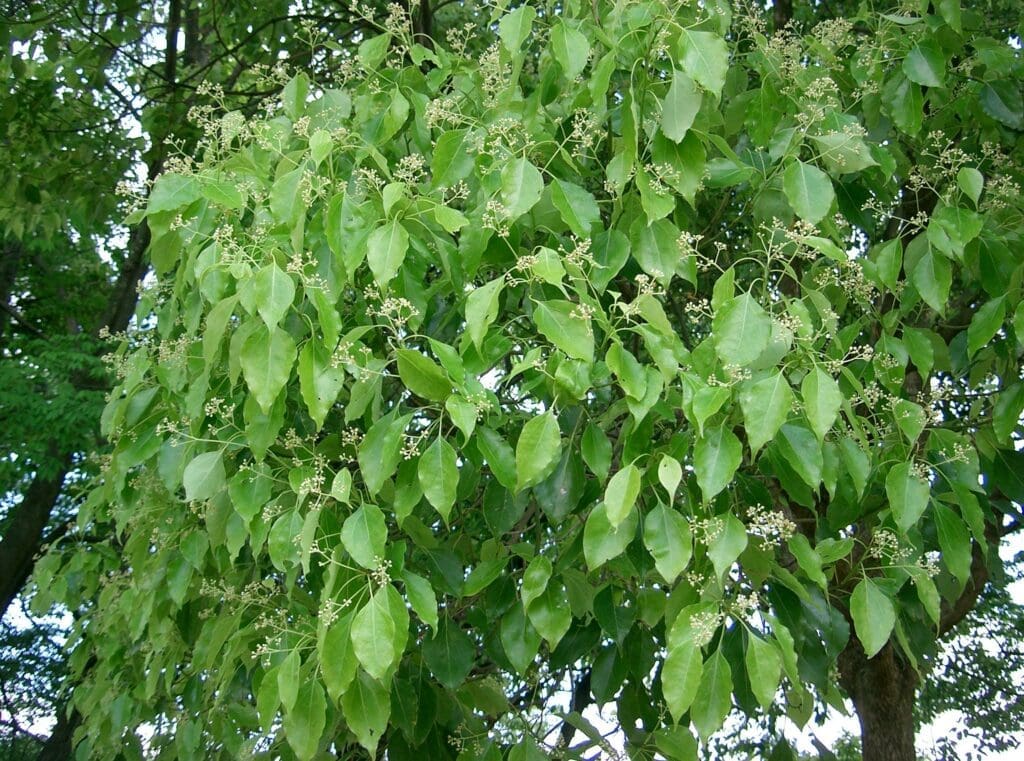
Camphora
Latin name: Camphora
Short name: Camph
Common name: Camphor | Gum Camphor | Chinese Laurel | Camphor Tree | Cinnamomum camphora
Primary miasm: Acute Secondary miasm(s): Sycotic
Kingdom: Plants
Family: Lauraceae
- Symptomatology
- Remedy Information
- Differentiation & Application
Camphor is a crystalline ketone obtained from the wood of the camphor tree (Cinnamomum camphora), native to East Asia. It has a penetrating, pungent odour and strong physiological effects on the nervous and vascular systems.
Widely used in traditional and allopathic medicine for respiratory ailments, muscle rubs, insect repellents, and antiseptics; also in religious rituals and embalming.
First proved by Hahnemann and detailed in Materia Medica Pura. Most symptoms arise from toxicological sources, and its use in collapse states stems from its powerful physiological action.
- Nervous system – sudden collapse, chill, prostration, convulsions
- Vascular system – spasms, coldness, cyanosis
- Skin and senses – numbness, insensibility, collapse
- Lungs and respiration – spasm, asthmatic suffocation
- Mind – delirium, fear, sudden violence or indifference
- Stomach – nausea, coldness, spasmodic vomiting
- Urinary system – suppression of urine in shock
- Extremities – cramping, coldness, weakness
- Open air
- Heat (when used externally)
- Cold applications (in some neuralgic pain)
- Rubbing or friction
- Lying down (in cases of faintness)
- Cold air, slightest draught
- Touch – extreme sensitivity
- Mental excitement
- Motion – aggravates spasms
- Suppression of discharges
- Night and early morning
- Sudden shock, fear, or emotional disturbance
- Carbo vegetabilis – Also icy cold, with collapse, but more flatulence, desire for fanning, and offensive discharges
- Veratrum album – Collapse with cold sweat and diarrhoea, but more violent purging and craving for cold drinks
- Arsenicum album – Cold, anxious, restless, but more organised and gradual collapse
- China officinalis – Prostration from fluid loss, but with bloating and periodicity
- Opium – Collapse with unconsciousness, but more congestive than spasmodic
- Complementary: Carbo veg., Veratrum alb.
- Antidotes: Opium, Nux vomica
- Follows well: Aconite in shock, Cuprum in cramps
- Inimical: Most other strong remedies—must use alone in early collapse
Camphora is a remedy of extremes: icy coldness, rapid collapse, and nervous violence alternating with stupor. Its essential theme is the immediate suspension of reaction, whether emotional, circulatory, or secretory. Useful in first stages of acute collapse, whether from cholera, fright, or suppression. It is the blank slate—the erased blackboard—before the remedy picture fully forms. Without Camphor, the patient may not rally enough to exhibit curative symptoms.
- Useful in the very beginning of acute illness when no reaction occurs
- Cholera collapse: cold, blue, faint, purging absent
- Sunstroke or shock with fainting, rigid limbs
- Prevents suppression of skin eruptions during illness
- Aids reaction when well-chosen remedy fails to act
Generalities
- Collapse, sudden
- Coldness, extreme
- Suppression of eruptions
- Fainting, with icy sweat
Mind
- Delirium, alternating with apathy
- Fear of death
- Sudden impulses
Chest / Respiration
- Suffocation, spasmodic
- Oppression, icy feeling
- Dyspnoea, worse motion
Extremities
- Cold, blue, spasmodic
- Twitching, cramps
- Trembling
Skin
- Cold, clammy sweat
- Suppressed eruptions
- Icy to touch
Samuel Hahnemann – Materia Medica Pura: Original proving and collapse indications
T.F. Allen – Encyclopaedia: Provided toxicological and clinical detail
John Henry Clarke – Dictionary of Practical Materia Medica: Detailed coldness, mind, and acute collapse symptoms
William Boericke – Pocket Manual: Practical tips in collapse, shock, and suppression
James Tyler Kent – Lectures on Homoeopathic Materia Medica: Emphasised Camphora’s use in blocked reaction and emergency states
